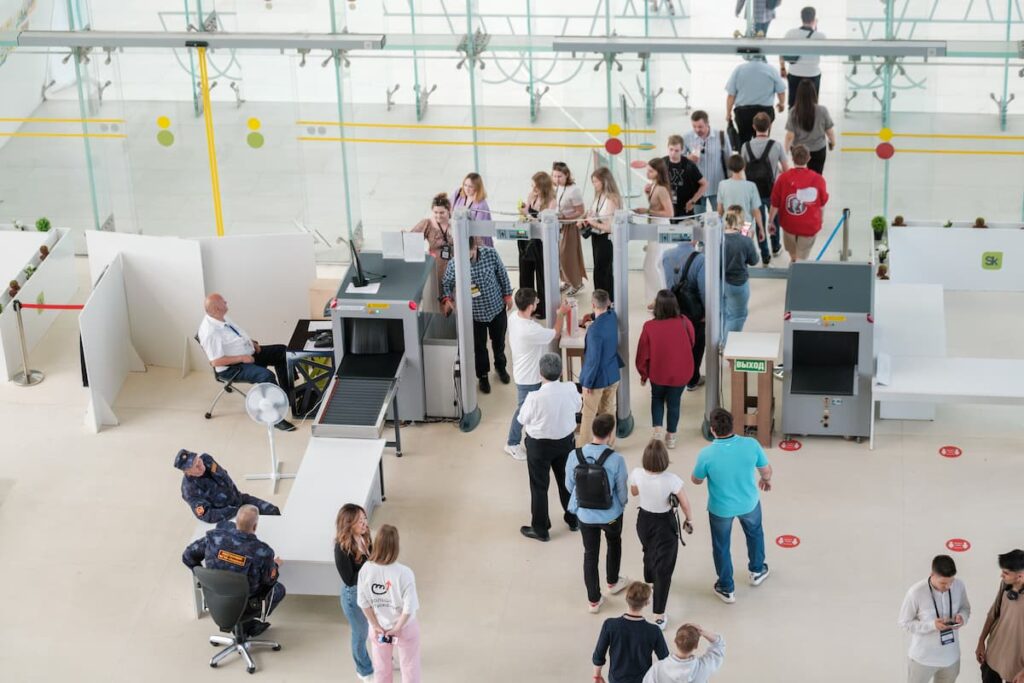Heat and Security Don’t Always Mix
As global temperatures rise and travelers flood airports during the busy summer season, the Transportation Security Administration (TSA) has flagged an unexpected trigger for additional screening: sweat. While heavy perspiration is a natural response to heat, it can also interfere with airport security scans, potentially resulting in extra scrutiny.
According to a TSA spokesperson, moisture from the body can change the way clothing appears under Advanced Imaging Technology (AIT). When this happens, the machines may register an anomaly, prompting a security officer to conduct a manual pat-down in the affected area. Travelers unaware of this phenomenon may find themselves puzzled after setting off alarms despite carrying no restricted items.
This lesser-known issue adds a new layer to the already complex world of airport screenings, especially during the peak of summer. For travelers navigating increasingly hot conditions, staying dry isn’t just a matter of comfort but can also affect the efficiency of their airport experience.
AIT Sensitivity and TSA Adjustments
The TSA’s AIT systems are designed to detect changes in body shape or density under clothing that could signal hidden items. While this enhances security, it also means that non-threatening variables like sweat can occasionally be misread. Moisture can increase fabric density or cause it to cling unnaturally to the body, triggering a false alarm.
However, TSA has implemented changes aimed at improving checkpoint efficiency. Notably, the requirement to remove shoes has been lifted for all passengers, potentially reducing wait times. Despite this improvement, other restrictions remain in place, including the well-known 3.4-ounce liquid rule.
Still, savvy travelers can take advantage of TSA-approved workarounds, including a method for bringing water through security — a useful hack during heatwaves. Though it requires forethought, the benefit of having a cold drink beyond the checkpoint can be worth the effort.
Navigating Summer Travel in High Heat
Sweaty travelers aren’t just a U.S. phenomenon. With Western Europe experiencing its hottest June on record and most homes lacking air conditioning, international passengers are also dealing with intense heat. CNN has developed a heat-risk tracker to help U.S. residents monitor local conditions, which can inform travelers about when it’s critical to hydrate and seek shade.
In addition, experts recommend practical tools to deal with perspiration. CNN Underscored, a review platform owned by CNN, has compiled a list of products that help manage sweat — a useful resource for frequent flyers aiming to avoid unwanted pat-downs.
Airports, already high-stress environments, become even more uncomfortable when travelers are dealing with heat-induced issues. Simple measures such as wearing breathable clothing, hydrating regularly, and carrying sweat-absorbing accessories can make a notable difference.
Technology and Travel Trends Collide
While some travelers may be unexpectedly pulled aside due to perspiration, others are witnessing the future of air travel unfold. A CNN aviation correspondent recently tested a self-landing system in a private plane, letting go of the controls to allow the aircraft to land on its own. Such advancements hint at a new era in flight safety and automation.
As airports adjust their policies and technology continues to evolve, travelers must stay informed about how their everyday habits — including sweating — might impact their journey. In an era where both climate and technology are reshaping the travel landscape, preparation remains key.



